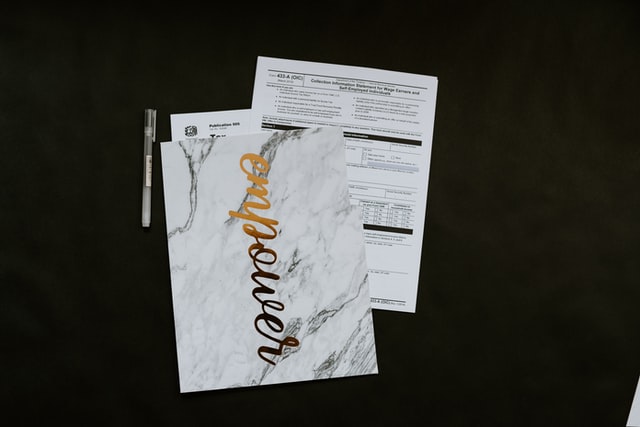A self-directed individual retirement account (SDIRA) is a type of individual retirement account (IRA) that can hold a variety of alternative investments normally prohibited from regular IRAs. Although the account is administered by a custodian or trustee, it's directly managed by the account holder—the reason it's called “self-directed.”
Available as either a traditional IRA (to which you make tax-deductible contributions) or a Roth IRA (from which you take tax-free distributions), self-directed IRAs are best suited for savvy investors who already understand the alternative investments and who want to diversify in a tax-advantaged account.
A self-directed IRA (SDIRA) is a variation on a traditional or Roth IRA in which you can hold a variety of alternative investments, including real estate, that regular IRAs can't own.
In general, self-directed IRAs are available only through specialized firms that offer SDIRA custody services.
SDIRA custodians can't give financial or investment advice, so the burden of research, due diligence, and management of assets rests solely with the account holder.
Understanding a Self-Directed IRA (SDIRA)
The main difference between SDIRAs and other IRAs is the types of investments you can hold in the account. In general, regular IRAs are limited to common securities like stocks, bonds, certificates of deposit, and mutual or exchange-traded funds (ETFs). But SDIRAs allow the owner to invest in a much broader array of assets. With an SDIRA, you can hold precious metals, commodities, private placements, limited partnerships, tax lien certificates, real estate, and other sorts of alternative investments.
As such, an SDIRA requires greater initiative and due diligence by the account owner. With most IRA providers, you can only open a regular IRA (traditional or Roth), and can only invest in the usual suspects: stocks, bonds, and mutual funds/ETFs. If you want to open a self-directed IRA, you’ll need a qualified IRA custodian that specializes in that type of account. Not every SDIRA custodian offers the same range of investments. So, if you’re interested in a specific asset—say, gold bullion—make sure it’s part of a potential custodian’s offerings.
SDIRA custodians aren’t allowed to give financial advice (remember, the accounts are self-directed)—which is why traditional brokerages, banks, and investment companies usually don't offer these accounts. That means you need to do your own homework. If you need help picking or managing your investments, you should plan on working with a financial advisor.
Self-directed Roth IRAs open up a large universe of potential investments. In addition to the standard investments—stocks, bonds, cash, money market funds, and mutual funds—you can hold assets that aren’t typically part of a retirement portfolio.
For example, you can buy investment real estate to hold in your SDIRA account. You can also hold partnerships and tax liens—even a franchise business.
However, the Internal Revenue Service (IRS) forbids a few specified investments in self-directed IRAs, whether it’s the Roth or traditional version. For example, you can’t hold life insurance, S Corporation stocks, any investment that constitutes a prohibited transaction (such as one that involves “self-dealing”), and collectibles.
Collectibles include a wide range of items, including antiques, artwork, alcoholic beverages, baseball cards, memorabilia, jewelry, stamps, and rare coins (note that this affects the kind of gold that a self-directed Roth IRA can hold). Check with a financial advisor to be sure you aren’t inadvertently violating any of the rules.
Typically, in a 401K or IRA account, investors pace money in retirement accounts and leave their investing up to an account custodian. The custodian is responsible for making investment decisions for retirement account holders. Sometimes they do a good job and sometimes they do not. Often they beat inflation by a couple points. It is nothing to brag about, but it is usually a good decision for people to set up retirement accounts early in life, contribute consistently, and let it grow over time.
Once the account is set up, the investor has no say on where their money is invested. The investor can choose if the account is traditional or Roth and can determine the risk level and general portfolio of trades. There is an alternative to this which is called a self-directed retirement account.
With a self-directed retirement account, the investor takes the responsibility of trading. This means the investor directs where to invest the retirement account money. The investor can choose the mutual fund or stocks, or they can direct the account to invest in real estate. Some accounts are checkbook controlled, so the investor can write checks directly from their retirement account.
The advantage of using a self-retirement account to invest in tax liens and deeds, rather than using a personal bank account, is that taxes defer the same way the original retirement account was set up. With a Roth IRA, the investor is taxed on the front when the money is placed in the account, but not when the money is pulled out of the account maturely. Another advantage is that the investor can use retirement funds that they would not usually have access to. These funds might be idle or barely making any money. The investor can choose to direct some of that money to tax deeds or tax lien investments.
Set Up
You may have a 401k through your current employer and an IRA account. You need to see if these accounts are self-directed and if they allow real estate investments. Some accounts limit where you can invest money. If your account is not self-directed, or does not allow for real estate investments, you can move that money to an account that is self-directed, or that allows for real estate investments. You may be charged with a fee or penalty to make the transfer. If you can move your money into the right type of account, you might be able to avoid these fees.
If you start from scratch, you need to decide where to set up your account and what type. The most common is a self-directed Individual Retirement Account (IRA). To find companies that offer self-directed retirement accounts, refer to our website or speak with one of our support agents. You can also set up a company, like an LLC, and set up your IRA through your LLC. That is quite simple to do in most states.
Types of Accounts
The primary IRA you can choose from are traditional IRA accounts and Roth IRA accounts. The difference between these accounts is the point in time where the investor is taxed. Contributions to Roth accounts are made with after-tax assets. Contributions to traditional IRA accounts are made on pre-tax assets. All transactions within both IRAs have no tax impact, and withdrawals are usually tax-free. Roth IRA withdrawals are usually tax free. Traditional IRA withdrawals at retirement are taxes as income. Roth accounts have become popular because you are not taxed for the growth made in the account, where traditional accounts tax you when you pull money out of the account, but you are not taxed before putting money in the account. When setting up your account with the custodian, have an open dialogue to discuss which option is best for your situation.
Once you have set up your account, you will need to fund it. The investor has a limit on the amount they can contribute to the account yearly. It is possible to set up multiple accounts to get more money in retirement accounts each year. Once the investor funds the account and has checkbook control, they can make investments in their LLC name.
Once the investment matures, the money is put right back into the IRA. Since the investor never takes that money into personal accounts, they are not taxed with normal income. This is how the investor avoids being taxed on the money right away. The investor continues the process of making investments through the self-directed IRA, depositing money directly back to the IRA, and then reinvesting repeatedly to maximize the return.
Potential Risks
SDIRAs have lots of benefits. But there are a few things to watch out for. Prohibited transactions. If you break a rule, the entire account could be considered distributed to you. And you’ll be on the hook for all the taxes, plus a penalty. Make sure you understand and follow the rules for the specific assets you hold in the account.
Due diligence. Again, SDIRA custodians can’t offer financial advice. You’re on your own. Make sure you do your homework and find a good financial advisor if you need help.
Fees. SDIRAs have a complicated fee structure. Typical charges include a one-time establishment fee, a first-year annual fee, annual renewal fee, and fees for investment bill paying. These costs add up (and cut into your earnings).
Your exit plan. It’s easy to get out of stocks, bonds, and mutual funds: just place a sell order with your broker, and the market takes care of the rest. Not so with some SDIRA investments. If you own an apartment building, for example, it will take some time to find the right buyer. That can be especially problematic if you have a traditional SDIRA and need to start taking distributions.
Fraud. Even though SDIRA custodians can’t offer financial advice, they will make certain investments available.













